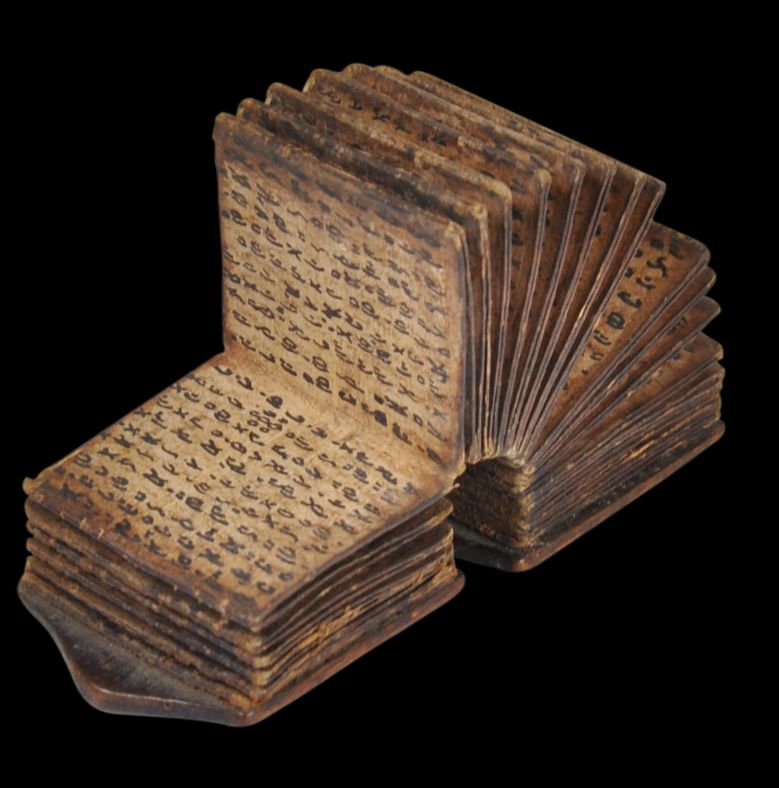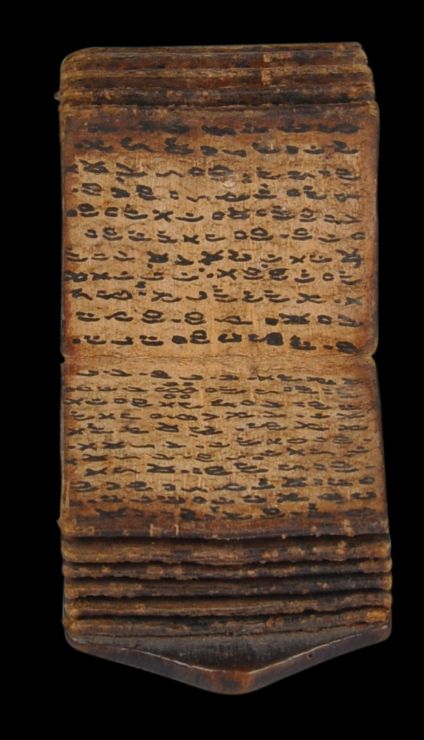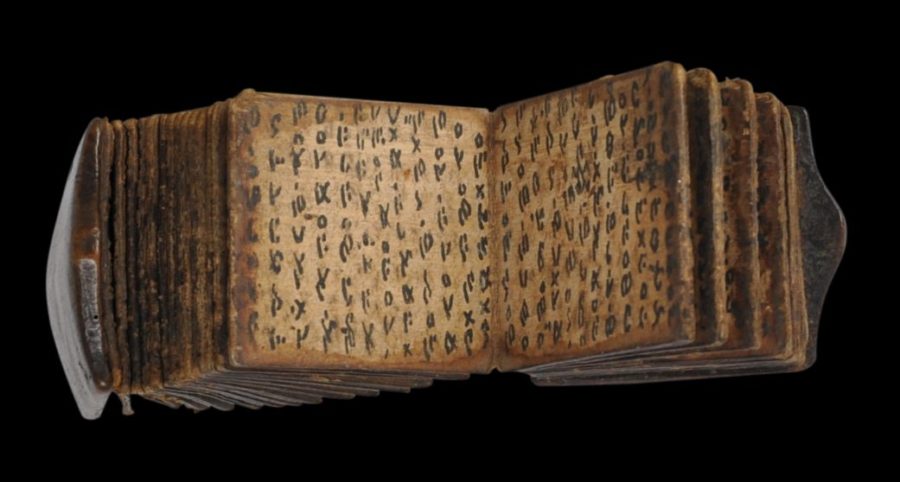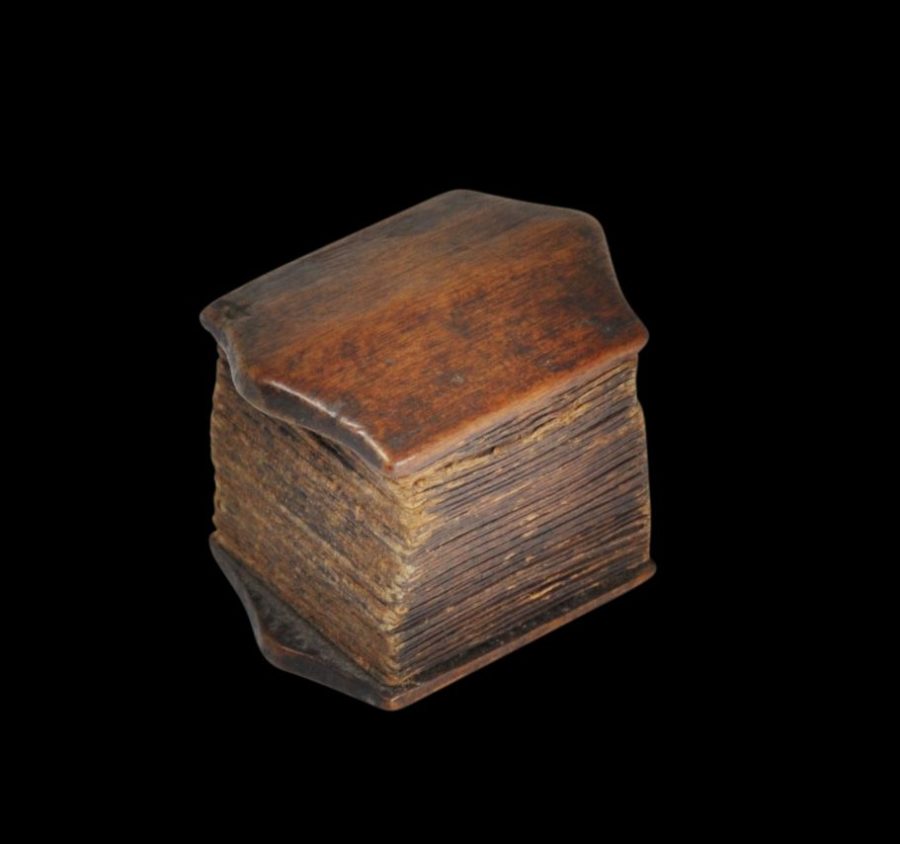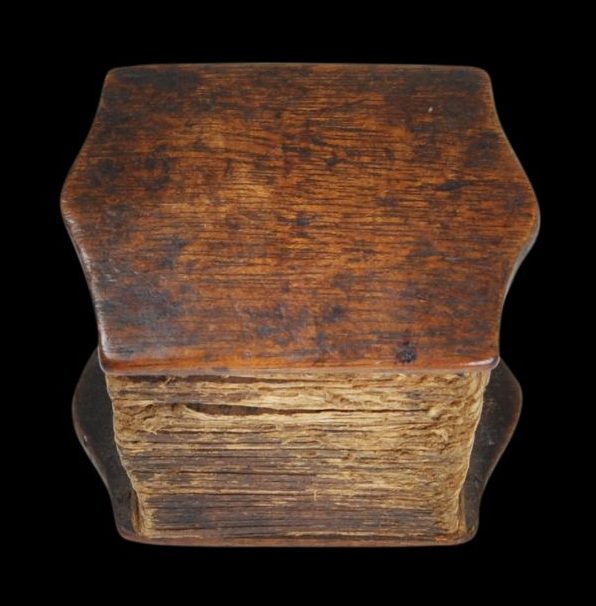This divination book or pustaha from the Batak people of northern Sumatra, has the most superb patina and obvious age.
It has 47 ‘leaves’ (and thus approximately double that in terms of pages) arranged in concertina fashion. Most pages have eleven lines of neat script in black ink.
Like most other pustaha, the ‘leaves’ are made of bark, most probably the inner bark of the alim tree (a species of aquileria).
The pustaha has an eight-sided, slightly ridged cover at each end. The covers have the most splendid, lustrous patina.
The pustaha has been known to the western world for several hundred years. There are at least a thousand pustaha in public and private collections (Teygeler, 1993) and the earliest datable example is in the British Library which was donated in 1764. Most pustaha do not carry dates – provenance and patina are the main tools used in approximating a date. Pustaha mostly deal with magic, divination and medicine (hadatuon) and tended to be compiled by Batak priests or medicine men (datu) for personal use as reference works. The script used to compose them is known as poda which is a ‘magical’ instructional language. The obscure nature of this script makes most pustaha difficult to translate.
Most pustaha in public collections do not seem to contain their original covers (Teygeler, 1993). Judging by the patina from handling and age, it is likely that ours does. Carving such covers was the work of the datu themselves as only they had the right to carve sacred objects.
Most contain illustrations or diagrams as well as text. (Ours contains one divination table or porhalaan only)
Almost all pustaha are written in black ink. Recipes for the ink varied but typically comprised ground charcoal made by smouldering resinous wood, usually from the Manggistan tree. This was then mixed with a binding resin and other ingredients.
The example here is in excellent condition.

A datu posing for a photograph, probably in the early 20th century, whilst reading through a larger pustaha.
References
ter Keurs, P., et al, Au Nord de Sumatra, Les Batak, 5 Continents 2008.
Kjellgren, E., Oceania: Art of the Pacific Islands in the Metropolitan Museum or Art, Yale University Press, 2007.
Sibeth, A., The Batak: Peoples of Island Sumatra, Thames & Hudson, 1991.
Sibeth, A., Batak: Kunst aus Sumatra, Museum fur Volkerkunde, 2000.
Tanudirjo, D.A., et al, Ancestors and Rituals, Snoeck, 2017.
Teygeler, R., ‘Pustaha: A study into the production process of the Batak book’, Bidgragen tot de Taal, Land, en Volkenkunde, 1993.



